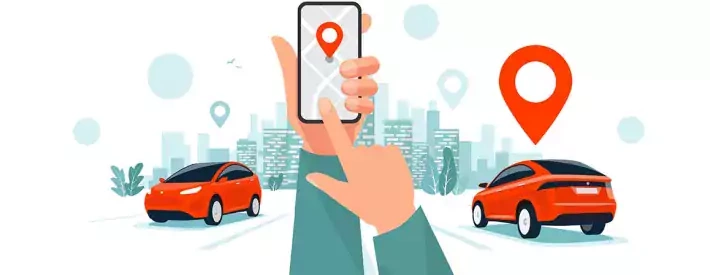Boost your pre-owned online car sales

For many people, online car sales are the future. But it’s not as simple as building an e-commerce site, using a traditional sales approach, then waiting for the customers to come flooding in.
The move to online has been accelerating over the years, with retailers using digital platforms to complement showroom activity. The pandemic added extra impetus to plans and helped get through what could have been a disastrous period for franchise and independent car retailers, but challenges remain.
We may all work in the automotive sector, but we don’t all have the benefit of a company vehicle, which means we’re also consumers in the car-buying process. My own experiences have been mixed, from first class to hugely disappointing. And that needs to change.
The buying process
There’s no doubt that the majority of customers do their research at home, then decide which make and model suits their purposes. That’s in stark contrast to 10 years ago when a trip to the dealership was the way to get the wheels turning on a new or second-hand car purchase.
Having decided on a potential purchase, the process is different depending on whether the shopping list includes a new car or a pre-owned. For a new car there will be a car configurator on the OEM website and details of any accompanying finance offers. From there, the consumer would either order online or be sent to their nearest franchise partner for further negotiations, including part-exchange value.
But while lots of shiny websites make it relatively easy to buy new, what happens in the preowned market? This is where the pitfalls of an end-to-end online process may show up, often leading to a disappointed customer. Investing in systems and processes that fulfil the needs of an online customer will ensure that car retailers, large or small, can not only survive but thrive in this digital world.
We have seen the disruptors lead the charge, but then been unable to make their financial offering work. Cazoo’s significant share price fall on the New York Stock Exchange illustrates the difficulties, and has led to their withdrawal from Europe and a cutting back of their physical sites in the UK.
In contrast, the UK car retailers with established dealerships and available stock have been able to offset the logistical difficulties the disruptors have felt – a point that Constellation Automotive Group, the owners of cinch has realised, leading to the purchase of Marshall Motor Group, one of the UK’s largest car retailers.
Car retailers also have the benefit of seeing those customers who started their buying journey online but want to touch and feel their chosen car before going ahead, with the option to have a test drive.
However, customer satisfaction can be adversely affected at the point where digital meets physical. The customer rightly expects that the dealership they have chosen online is totally up to date and aware of their digital journey and requirements. For example, is that car actually in stock at the dealership in question as opposed to somewhere else in the group? And is it fully prepared and available for a test drive?
There’s nothing worse for a customer who’s driven an hour or more to a dealership to be told that the car isn’t there, so the Distributor Management System (DMS) has to be constantly updated along with the website. Stock management is key, alongside a proactive sales team process that constantly monitors and actions online enquires.
A fully joined-up process
One of the downsides of the online process, especially if the customer elects to do everything remotely and have the car delivered or just collect it from the dealership, is that important profit centres for the car retailer – and useful products for the customer – can be overlooked.
Finance facilities is a big example, but this can be overcome with comprehensive and easy to understand details of each finance product on the website, with the customer having the ability to obtain a personalised quote and apply online. However, the features and benefits of products such as extended warranties, service plans, and paint/fabric/wheel protection also need to be prominent and easy to apply for.
Customers searching for a specific make and model with certain extras and a chosen colour will use a search engine, and often that car will be far away at a car retailer they don’t know. Therefore, creating trust and transparency from the very start is vital. Sadly, our industry is being unfairly tarnished by scam online dealers who advertise cars that don’t exist, taking the customer’s money upfront and then disappearing.
Key ingredients
Building trust is vital, and showing Trustpilot scores and positive customer reviews will help this.
I would also suggest that, like mystery shopping in the showroom carried out by an OEM or third party, car retailers carry out regular checks of their online experience to find out which stages of the customer journey work – and which don’t. I have seen the highs and lows, and those experiences clearly influence future purchases.
Savvy car retailers can be very successful in the digital sales age as they have so many advantages to capitalise on. But if you want to be one of those businesses then you’ll need a great online system, strong processes, and professional teams to provide a seamless and professional experience for the customer.
Put these all together and when digital meets physical, both customers and car retailers are winners.




